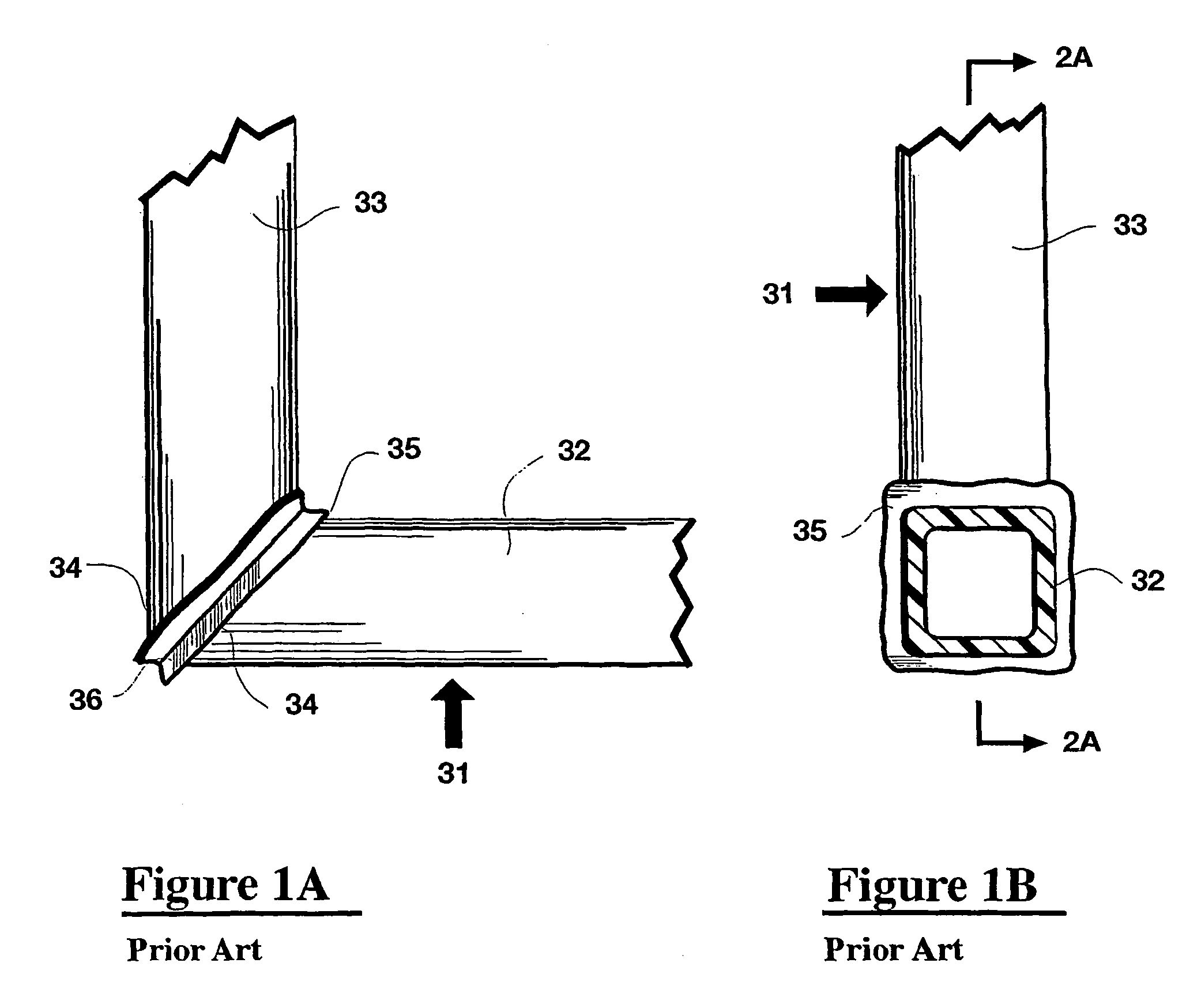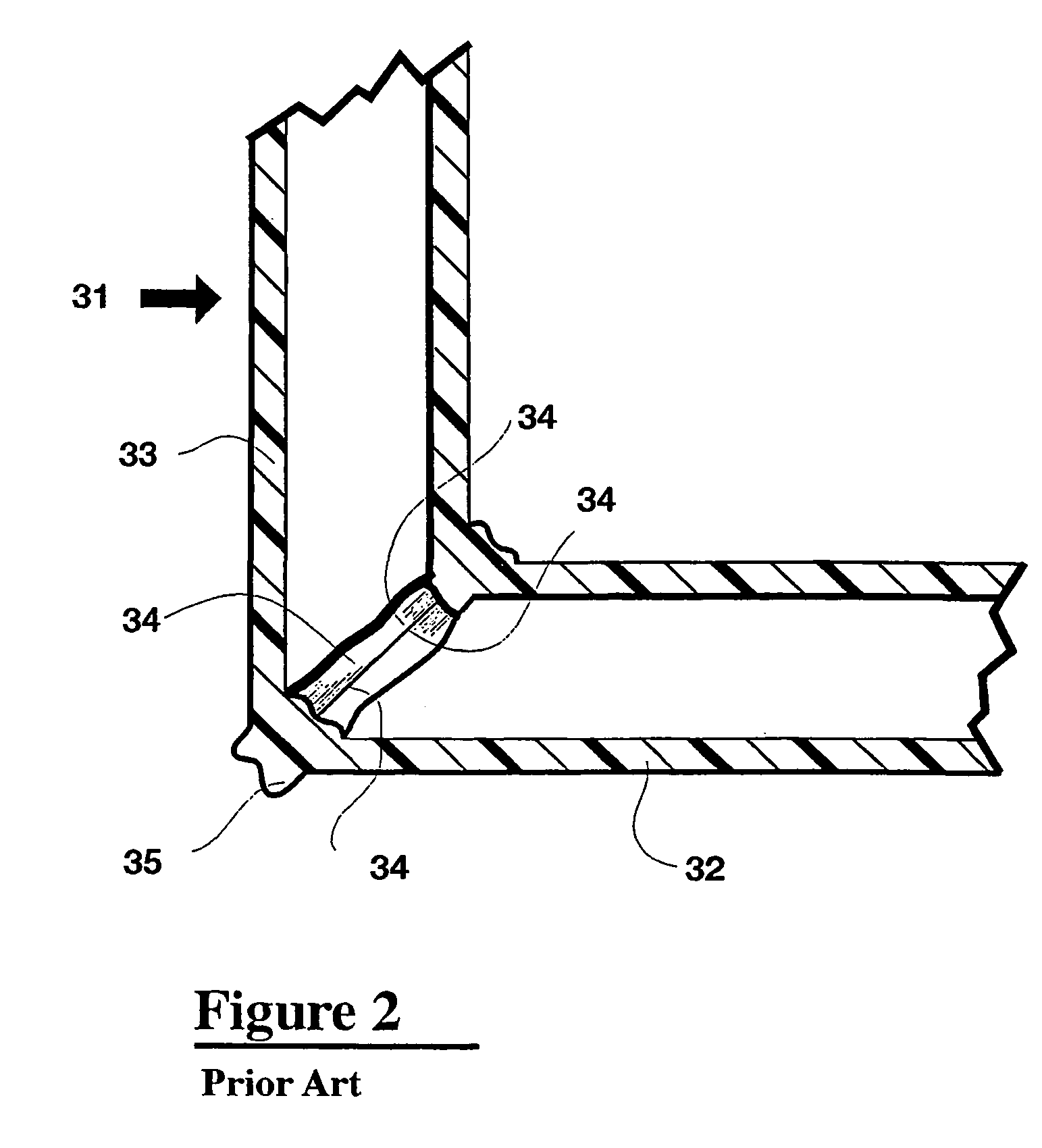Method and apparatus for vibration welding of thermoplastic components
a technology of thermoplastic components and vibration welding, which is applied in the direction of lamination, building components, and lamination of the auxiliary device for lamination, can solve the problems of increasing the quantity of plastic flash created, and affecting the quality of extruded profiles. , to achieve the effect of improving the build-up of friction generated hea
- Summary
- Abstract
- Description
- Claims
- Application Information
AI Technical Summary
Benefits of technology
Problems solved by technology
Method used
Image
Examples
Embodiment Construction
[0081]Referring to the drawings FIGS. 1A and 1B show side and front elevations of a frame corner assembly 31 fabricated from square hollow profile, glass fiber filled PVC extrusions 32 and 33. The miter cut corner ends 34 of the frame members 32 and 33 are welded together using conventional hot plate equipment. One major drawback of hot plate welding is that a large quantity of plastic flash 35 is created at the weld line 36. This plastic flash 35 has to be mechanically removed and this process often involves removing a shallow groove at the weld line 36. As a result of this mechanical removal process, the structural performance of the corner weld can be quite significantly reduced.
[0082]FIG. 2 shows a vertical cross section on a line 1B—1B through he frame corner assembly 31 where the miter cut ends 34 of the frame members 32 and 33 are welded together at the perimeter wall edge. As previously described this process creates plastic flash 35 that has to be mechanically removed from ...
PUM
| Property | Measurement | Unit |
|---|---|---|
| Thickness | aaaaa | aaaaa |
| Thickness | aaaaa | aaaaa |
| Angle | aaaaa | aaaaa |
Abstract
Description
Claims
Application Information
 Login to View More
Login to View More - R&D
- Intellectual Property
- Life Sciences
- Materials
- Tech Scout
- Unparalleled Data Quality
- Higher Quality Content
- 60% Fewer Hallucinations
Browse by: Latest US Patents, China's latest patents, Technical Efficacy Thesaurus, Application Domain, Technology Topic, Popular Technical Reports.
© 2025 PatSnap. All rights reserved.Legal|Privacy policy|Modern Slavery Act Transparency Statement|Sitemap|About US| Contact US: help@patsnap.com



